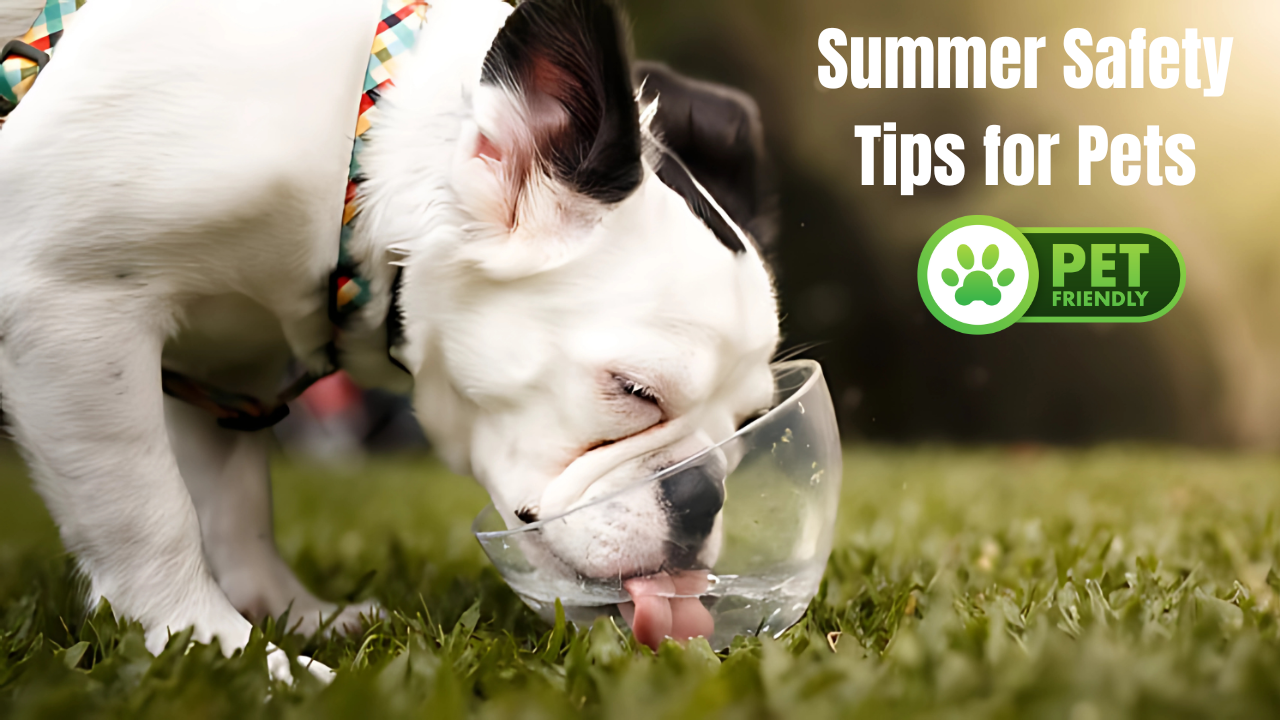Summer brings longer days, family vacations, and outdoor adventures, but it also presents serious challenges for our beloved pets. As temperatures climb and the sun beats down relentlessly, our four-legged companions face unique risks that many pet owners don’t fully understand. The reality is that dogs and cats can’t regulate their body temperature as effectively as humans, making them particularly vulnerable to heat-related emergencies.
Every year, emergency veterinary clinics see a surge in heat-related cases during the warmest months. From heat stroke to burned paw pads, these preventable incidents can turn a beautiful summer day into a life-threatening emergency. Understanding how to protect your pets isn’t just about comfort—it’s about survival.
This comprehensive guide will walk you through everything you need to know about keeping your pets safe, healthy, and comfortable throughout the summer season. Whether you’re a first-time pet owner or have years of experience, these insights will help you navigate the unique challenges that hot weather brings.

Understanding Your Pet’s Unique Vulnerability to Heat
Unlike humans, dogs and cats have limited options for cooling themselves down. While we can sweat through our skin, dogs primarily rely on panting to release heat, with only minimal sweating through their paw pads. Cats face similar challenges, making them both dependent on external factors for temperature regulation.
The anatomy of different breeds also plays a crucial role in heat tolerance. Brachycephalic breeds—those with shortened airways and flat faces like Bulldogs, Pugs, and Persian cats—struggle significantly more in hot weather. Their compressed airways make efficient panting nearly impossible, creating a dangerous situation when temperatures rise.
Age and health status further compound these vulnerabilities. Senior pets, puppies and kittens, overweight animals, and those with underlying health conditions face exponentially higher risks during hot weather. Their bodies simply can’t cope with the additional stress that extreme temperatures place on their systems.
Creating a Cool Indoor Environment
Temperature Control Strategies
When outdoor temperatures soar, bringing your pets indoors becomes non-negotiable. Air conditioning isn’t just a luxury during extreme heat—it’s a necessity for pet safety. Set your thermostat to maintain comfortable indoor temperatures, typically between 68-72°F, even when you’re not home.
If air conditioning isn’t available, create cross-ventilation with fans positioned strategically throughout your home. Ceiling fans work particularly well, but ensure any floor fans are placed safely away from curious pets who might investigate too closely.
Optimal Indoor Spaces
Designate the coolest areas of your home as pet zones during the hottest parts of the day. Basements, tile floors, and rooms with good airflow naturally stay cooler. Provide comfortable bedding that doesn’t trap heat—elevated cots work excellently as they allow air circulation underneath.
Consider investing in cooling mats designed specifically for pets. These products use gel technology or cooling crystals to provide relief without requiring electricity. Many pets find them incredibly soothing during hot spells.
Smart Exercise and Outdoor Activity Planning
Timing Your Outdoor Adventures
The key to safe summer exercise lies in timing. Early morning hours, typically before 8 AM, offer the coolest temperatures and lowest UV exposure. Evening walks after 7 PM provide another safe window, though you’ll need to ensure adequate visibility for safety.
During peak heat hours—typically 10 AM to 6 PM—keep outdoor activities to an absolute minimum. Even a few minutes on hot pavement can cause serious paw burns or trigger heat exhaustion.
Surface Temperature Testing
Before any outdoor excursion, perform the “hand test” on pavement surfaces. Place your hand flat against the concrete or asphalt for seven seconds. If it’s too hot for your hand, it’s definitely too hot for your pet’s paws. Remember that dark surfaces absorb and retain heat much more intensely than lighter-colored areas.
Seek out grassy areas, dirt paths, or shaded routes for walks. Beach sand can also become scorching hot, so test it the same way you would pavement before allowing your pet to walk on it.
Modified Exercise Routines
Reduce the intensity and duration of all physical activities during summer months. What might normally be a 30-minute energetic play session should become 10-15 minutes of gentle activity with frequent water breaks.
Swimming provides excellent exercise without the heat stress, but never leave pets unsupervised around water. Not all dogs are natural swimmers, and even excellent swimmers can struggle if they become overheated.
Hydration: Your Pet’s First Line of Defense
Water Management Systems
Fresh, cool water should be available at all times, with multiple stations throughout your home and yard. Change water frequently throughout the day, as standing water quickly becomes warm and less appealing to pets.
Consider investing in automatic water fountains that keep water circulating and cool. Many pets prefer moving water, and these systems encourage increased consumption. For outdoor areas, insulated water bowls help maintain cooler temperatures longer.
Encouraging Increased Water Intake
Some pets don’t drink enough water naturally, especially cats. Add ice cubes to water bowls for a refreshing treat that many pets enjoy. Wet food contains more moisture than dry kibble, so consider increasing the proportion of wet food during hot weather.
Low-sodium broth can be frozen into ice cube trays for a tasty way to increase fluid intake. Just ensure any broth used is specifically pet-safe and free from onions, garlic, or excessive sodium.
Grooming and Coat Management
The Science Behind Pet Coats
Many pet owners mistakenly believe that shaving their pet’s coat will keep them cooler, but this can actually make temperature regulation more difficult. Pet fur acts as insulation against both cold and heat, and removing it can lead to sunburn and reduced cooling efficiency.
Double-coated breeds like Golden Retrievers and German Shepherds have evolved sophisticated coat systems that require careful management rather than removal. The undercoat naturally sheds during warmer months, making regular brushing essential.
Proper Summer Grooming Techniques
Regular brushing removes loose fur and improves air circulation through the coat. Daily brushing during shedding season prevents matting, which can trap heat against the skin. Use appropriate tools for your pet’s coat type—slicker brushes for long-haired breeds, rubber grooming mitts for short-haired pets.
If you opt for professional grooming, discuss a “summer cut” rather than complete shaving. A skilled groomer can trim length while maintaining the coat’s protective properties. Never attempt to shave your pet yourself, as improper technique can cause injury or skin damage.
Vehicle Safety: A Critical Consideration
The Deadly Reality of Hot Cars
Even on seemingly mild days, vehicle interiors become death traps for pets. On an 85°F day, car temperatures can reach 102°F within ten minutes and 120°F within thirty minutes, even with windows partially open.
Cracking windows provides virtually no protection against this rapid temperature rise. The greenhouse effect of glass windows and metal surfaces creates an oven-like environment that can quickly become fatal.
Legal and Ethical Considerations
Many states have enacted laws making it illegal to leave pets unattended in vehicles during extreme weather. Beyond legal ramifications, the ethical responsibility to protect our pets from preventable suffering should guide every decision.
Plan your errands to exclude stops where pets can’t accompany you inside. If you must travel with your pet, ensure your destination welcomes animals, or leave them safely at home with proper climate control.
Recognizing Heat-Related Emergencies
Early Warning Signs
Heat exhaustion often precedes heat stroke, making early recognition crucial. Watch for excessive panting that seems out of proportion to activity level, increased drooling, and restless behavior. Pets may seek cool surfaces like tile floors or show reluctance to move.
Behavioral changes often appear before physical symptoms become obvious. Pets may become lethargic, refuse food, or seem confused or disoriented. Trust your instincts—if something seems wrong, take immediate action.
Critical Symptoms Requiring Emergency Care
Heat stroke represents a life-threatening emergency requiring immediate veterinary intervention. Symptoms include glazed eyes, rapid heartbeat, difficulty breathing, excessive thirst, fever, vomiting, and loss of coordination.
In severe cases, pets may experience seizures or lose consciousness. These symptoms indicate that internal organs are beginning to fail, making every minute crucial for survival.
Emergency Response Protocols
If you suspect heat stroke, move your pet to a cool area immediately while someone calls your veterinary emergency clinic. Apply cool (not cold) water to paw pads, belly, and inner thighs. Avoid ice or extremely cold water, which can cause blood vessels to constrict and actually slow cooling.
Offer small amounts of cool water if your pet is conscious and able to drink, but don’t force consumption. Focus on getting to professional veterinary care as quickly as possible, as heat stroke can cause internal damage that requires medical intervention.
Special Considerations for High-Risk Pets
Age-Related Vulnerabilities
Very young and elderly pets face increased risks during hot weather. Puppies and kittens haven’t fully developed their temperature regulation systems, while senior pets may have underlying health conditions that compromise their ability to cope with heat stress.
Monitor these vulnerable groups extra carefully, and consider additional precautions like limiting outdoor time even further or providing supplemental cooling measures.
Breed-Specific Needs
Brachycephalic breeds require special attention during any warm weather. Their shortened airways make efficient cooling nearly impossible, so these pets should remain indoors during hot weather with excellent air conditioning.
Thick-coated breeds like Siberian Huskies and Maine Coon cats also need careful monitoring, as their heavy coats can trap heat despite providing some insulation benefits.
Health Condition Considerations
Pets with heart conditions, respiratory issues, or weight problems face exponentially higher risks during hot weather. Work closely with your veterinarian to develop specific heat management strategies for pets with underlying health concerns.
Medications can also affect heat tolerance, so discuss any prescriptions with your vet to understand potential complications during warm weather.
Frequently Asked Questions
Q: Can I give my dog ice cubes to help them cool down?
Yes, ice cubes can be a safe and effective way to help dogs cool down and stay hydrated. Many dogs enjoy crunching on ice cubes
Q: How hot is too hot to walk my dog on pavement?
If you can’t comfortably hold your bare hand on the pavement for 7 seconds, it’s too hot for your dog’s paws.
Q: Should I shave my long-haired pet for summer comfort?
Generally, no. Pet fur provides insulation against both heat and cold, and completely shaving can actually make temperature regulation more difficult while increasing sunburn risk.

